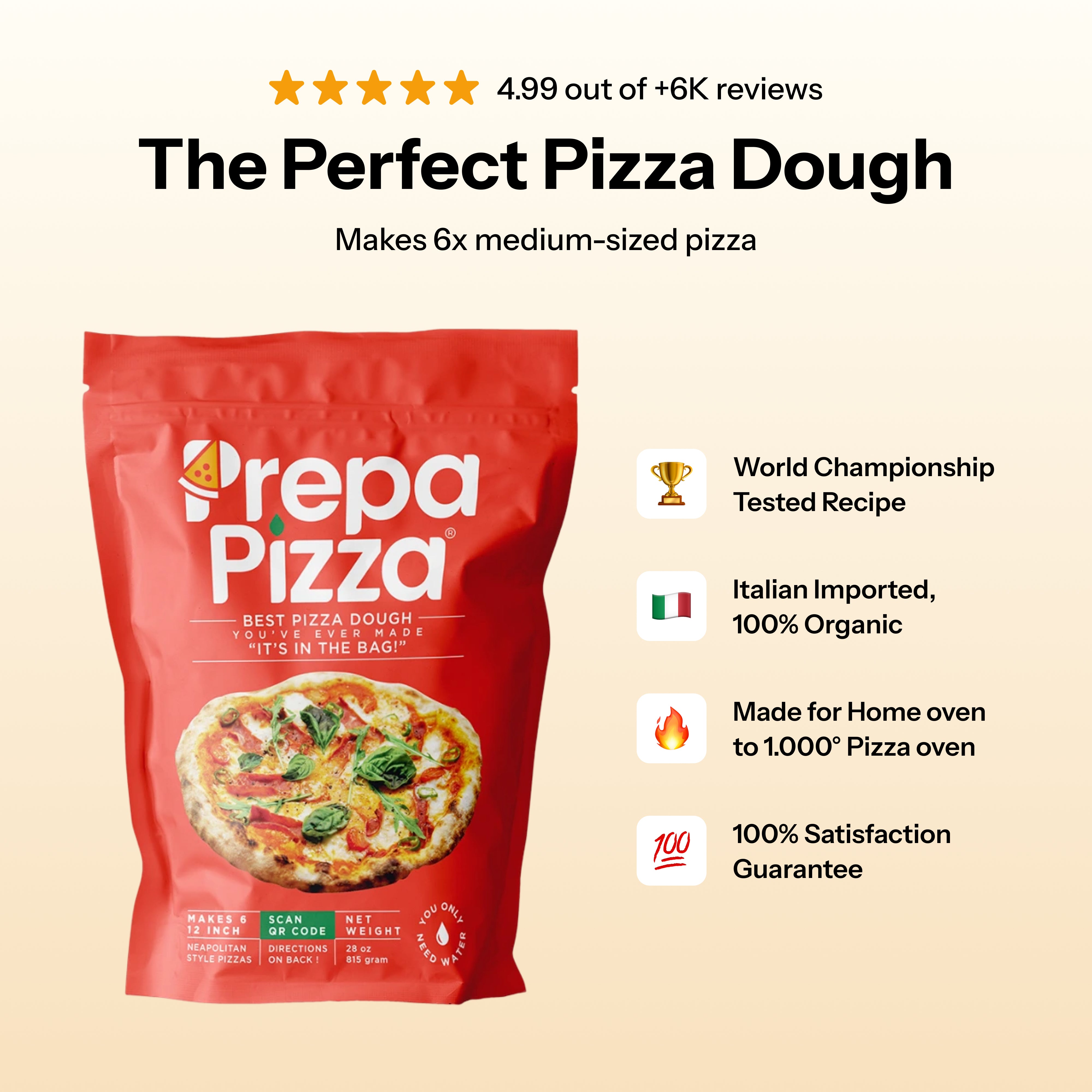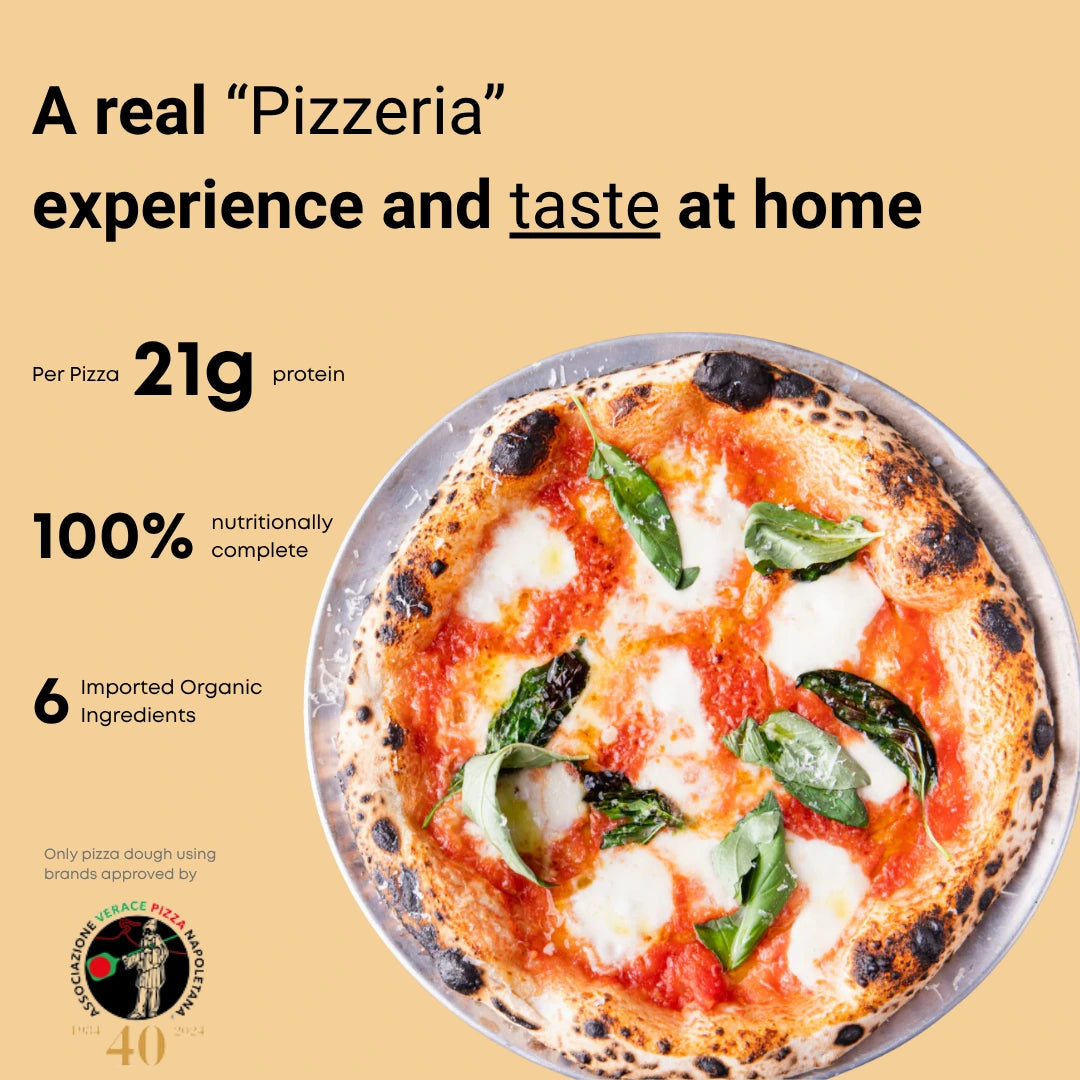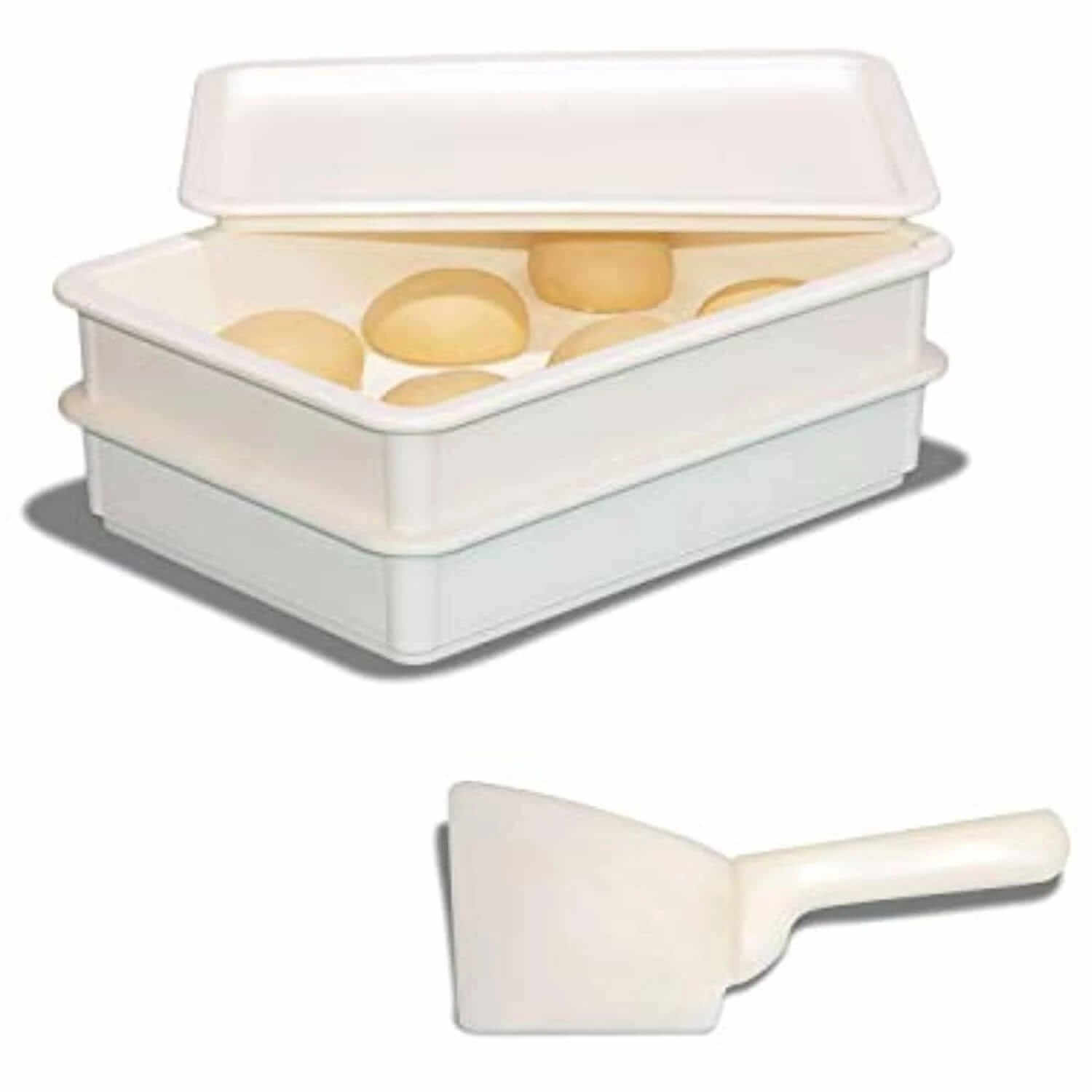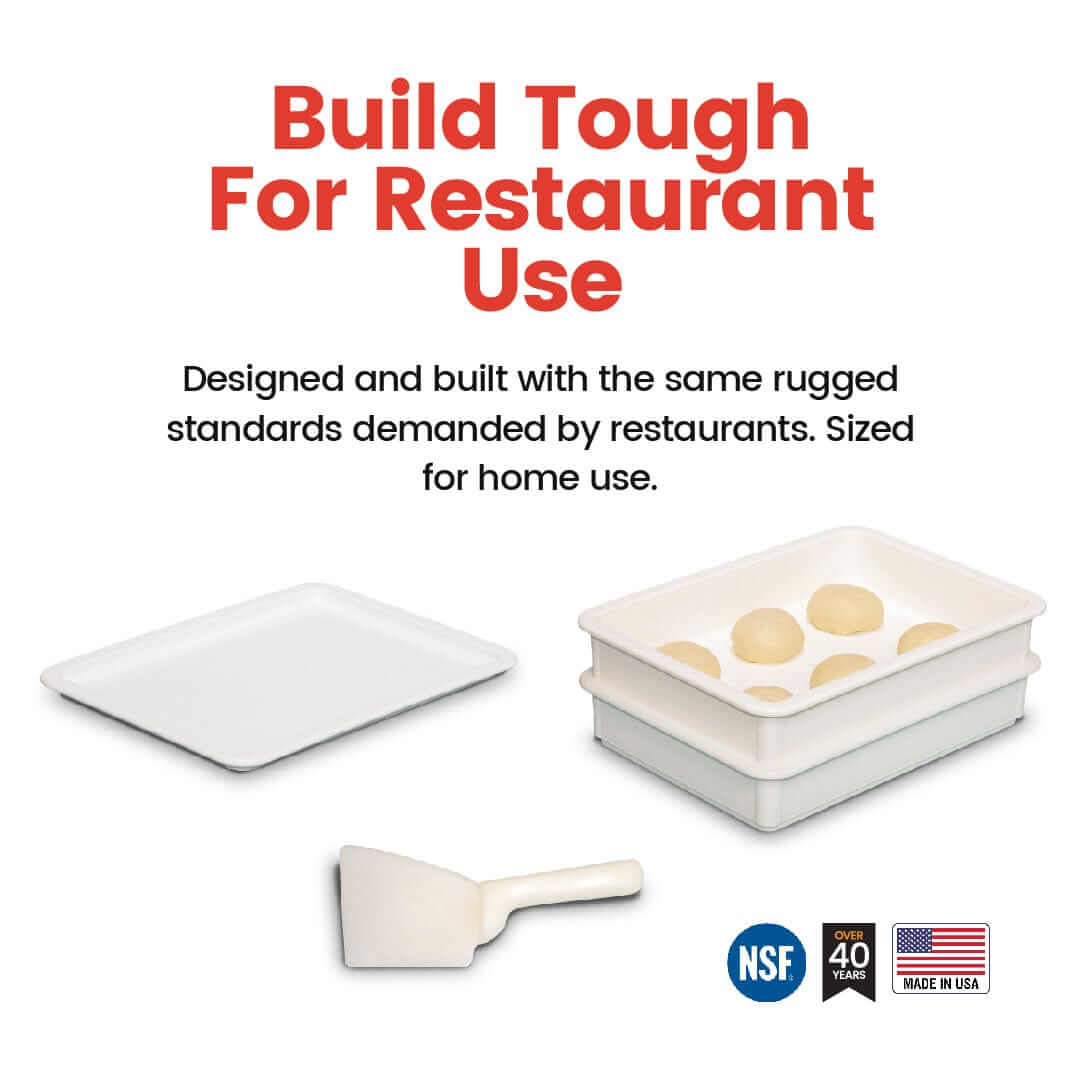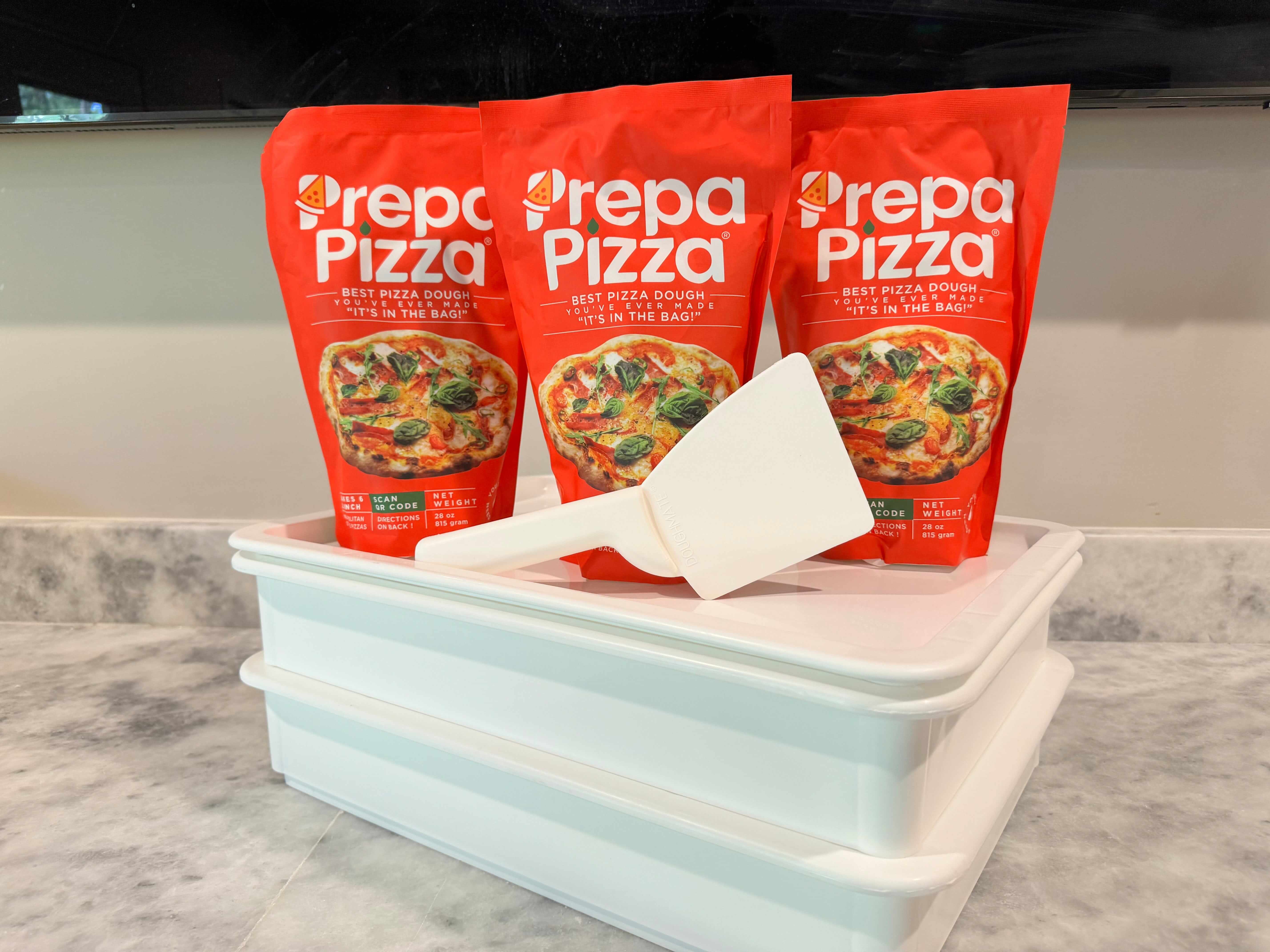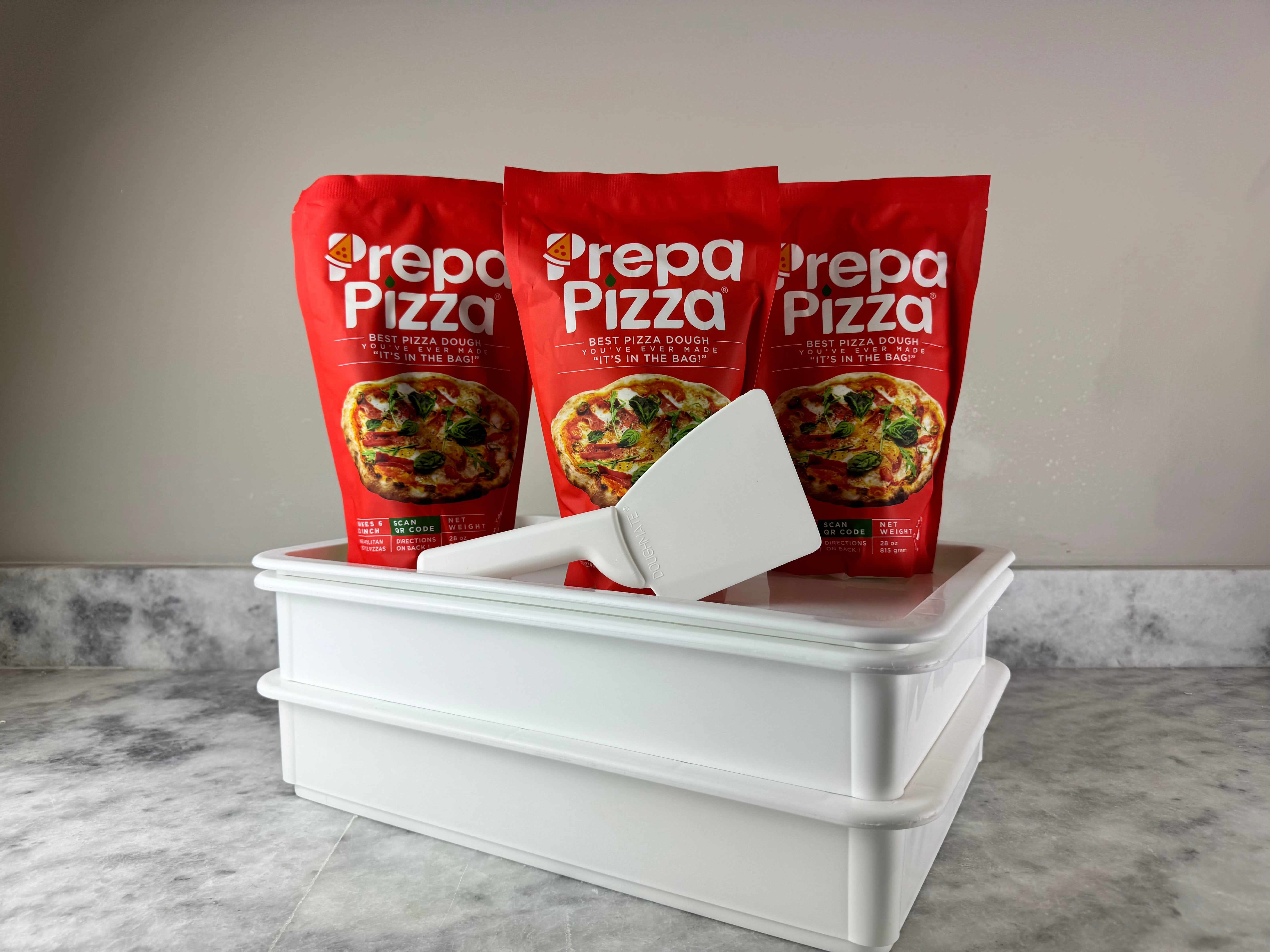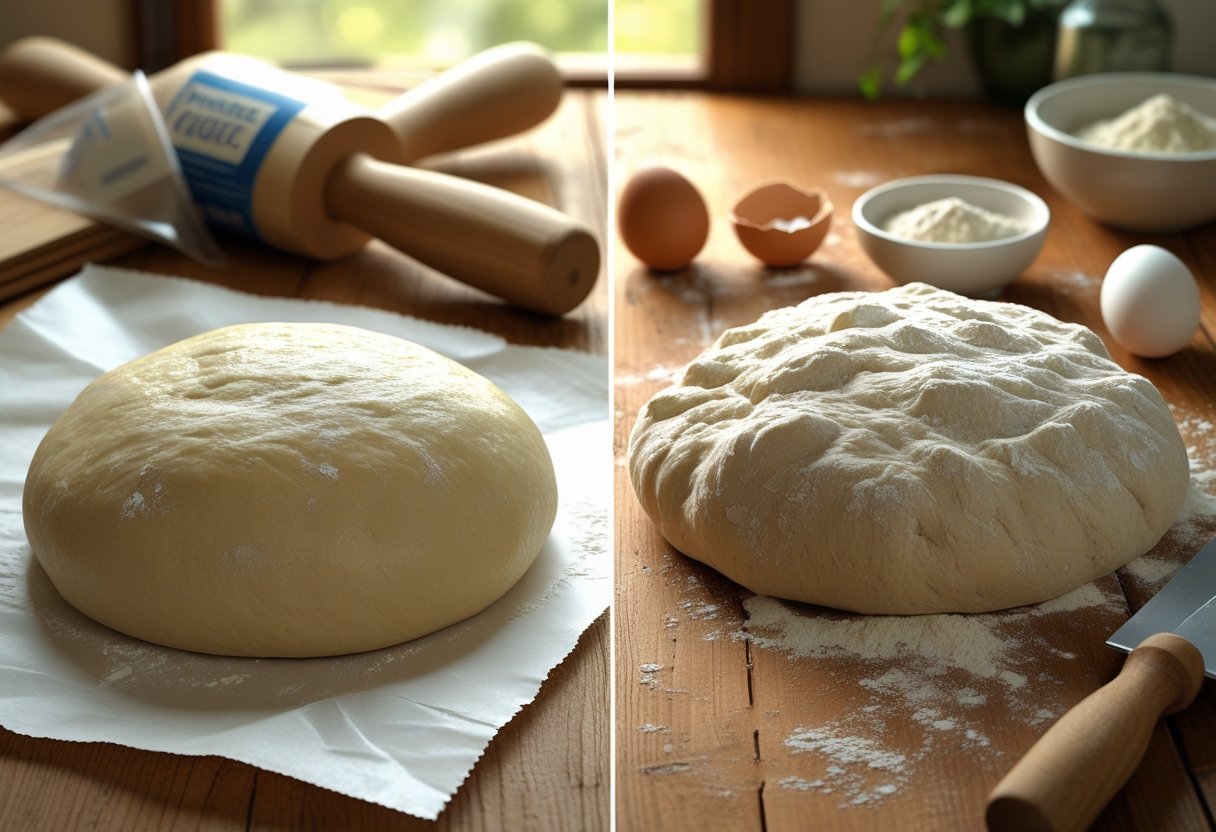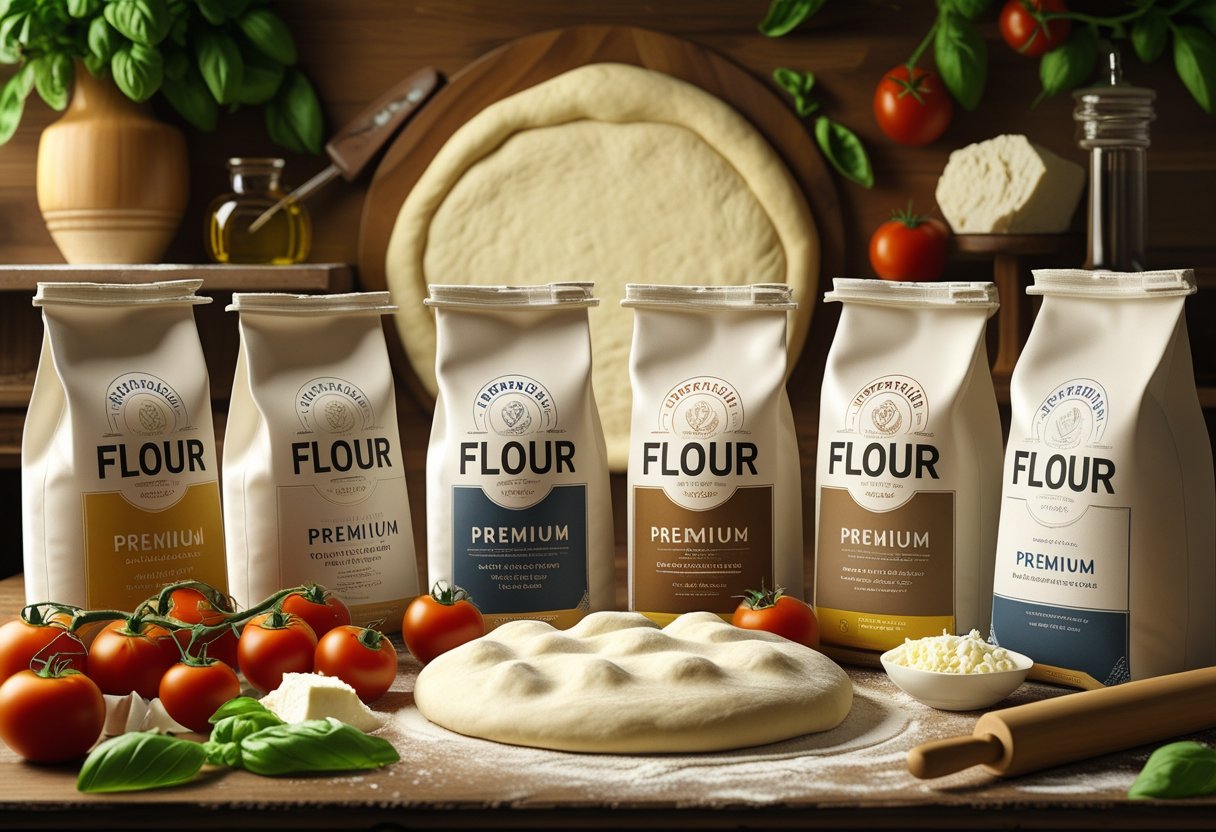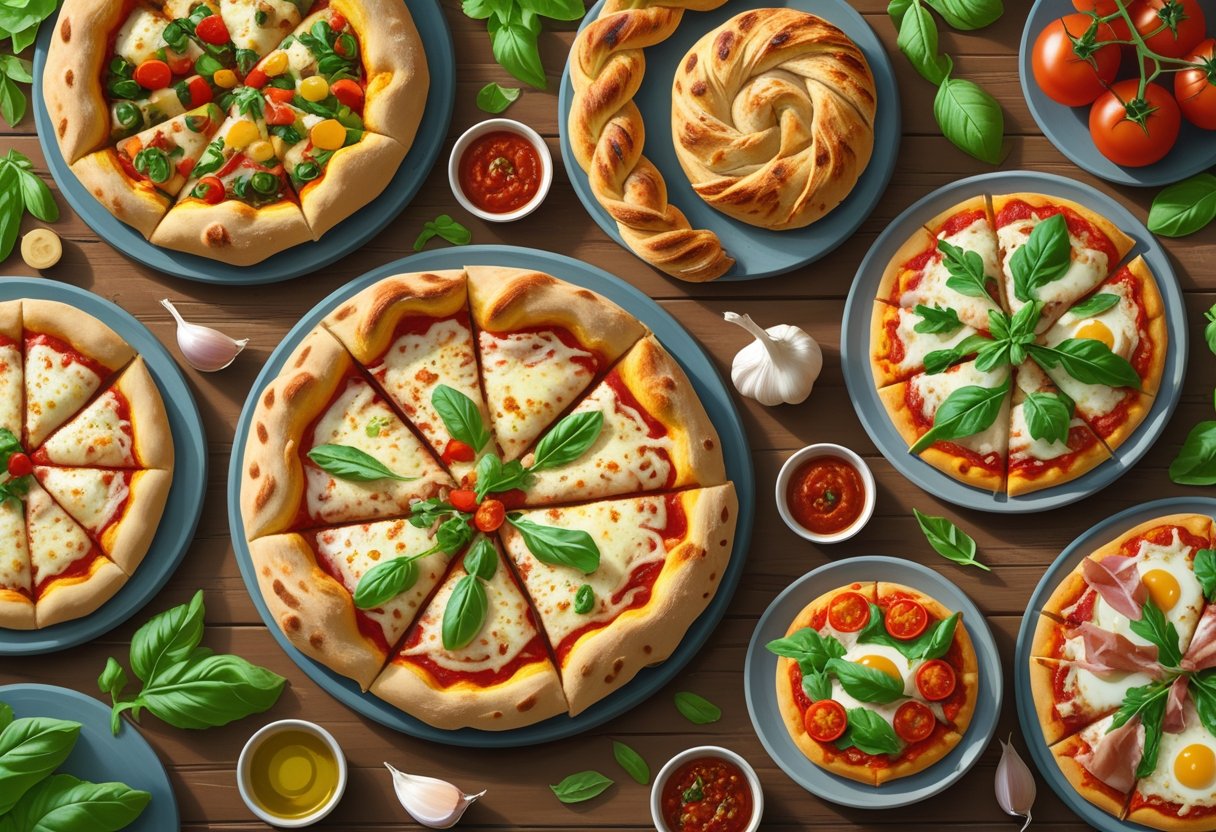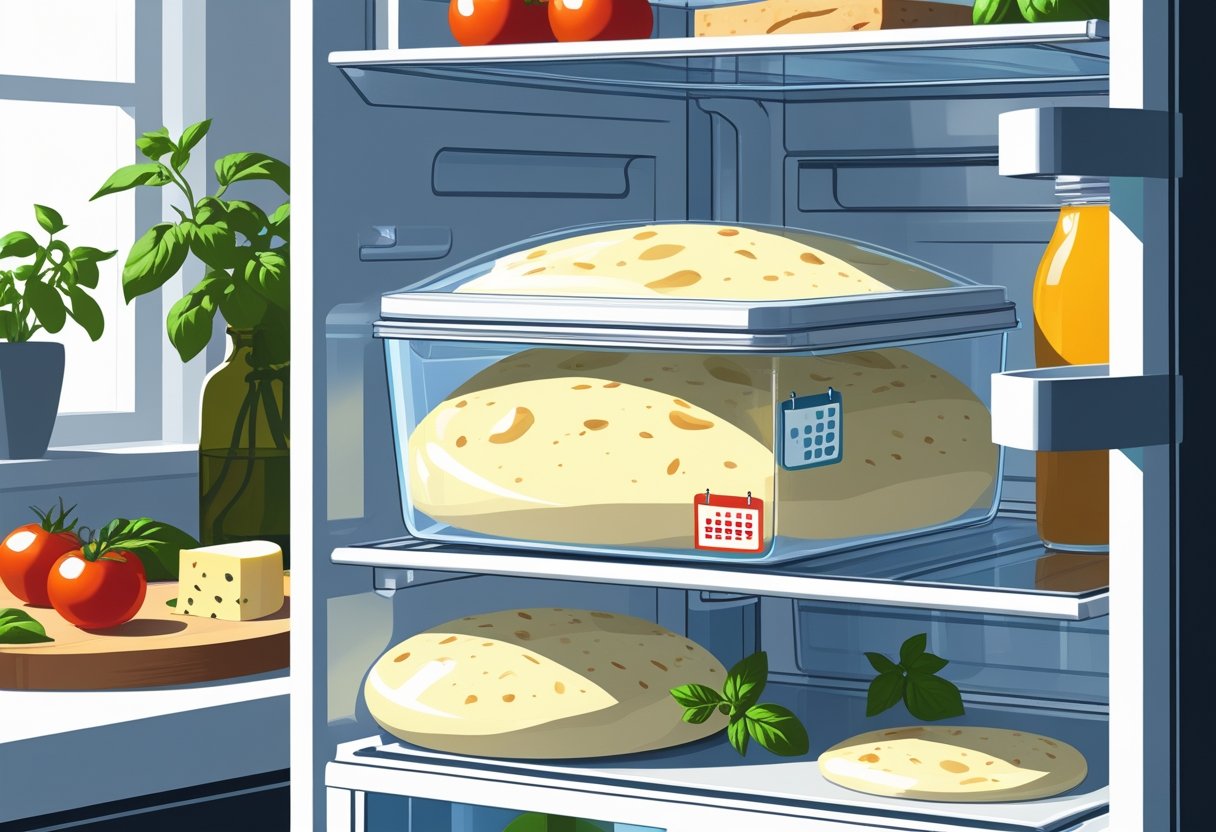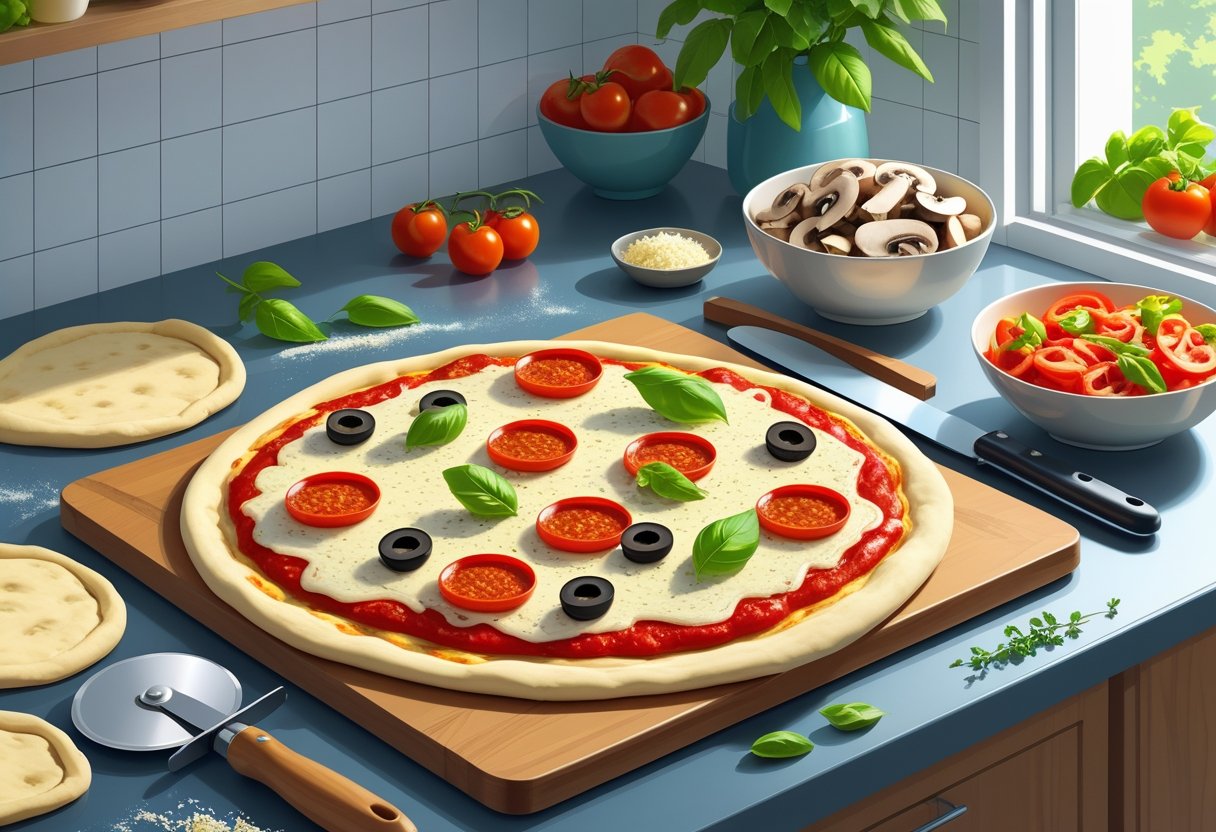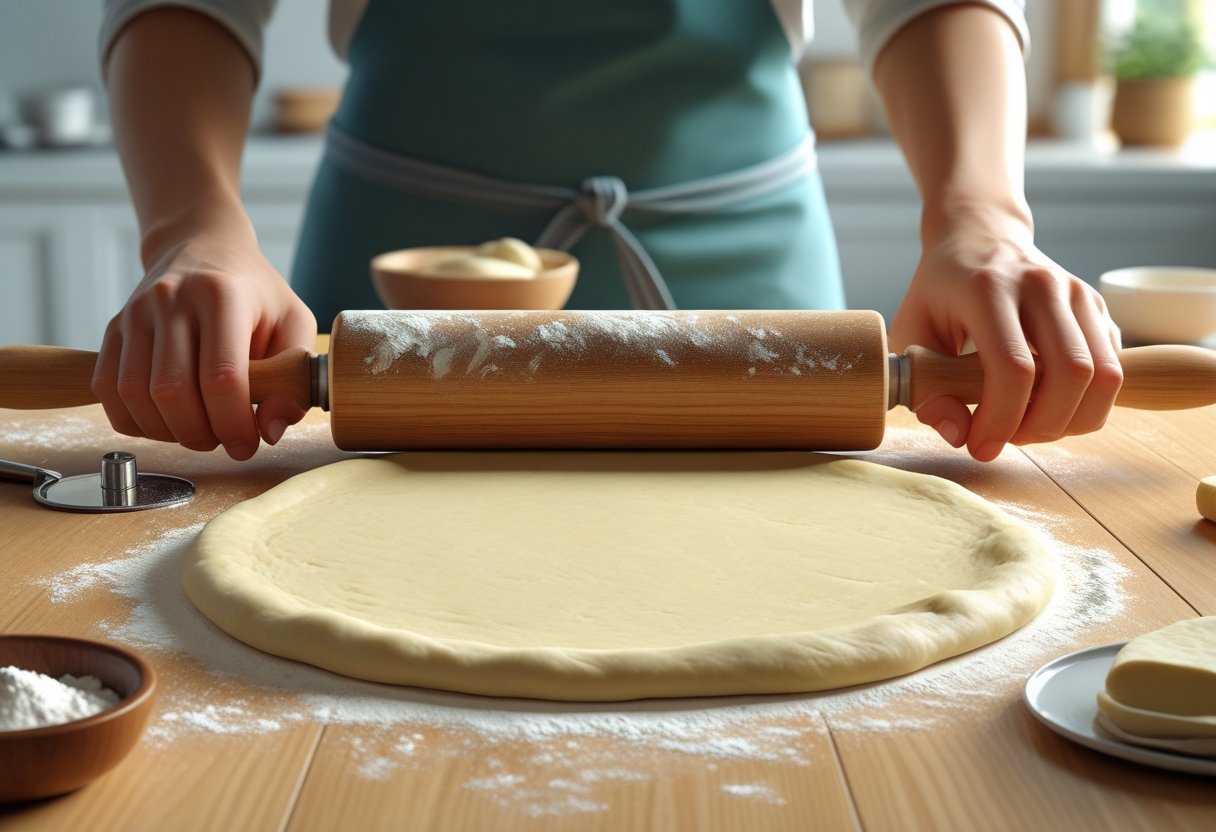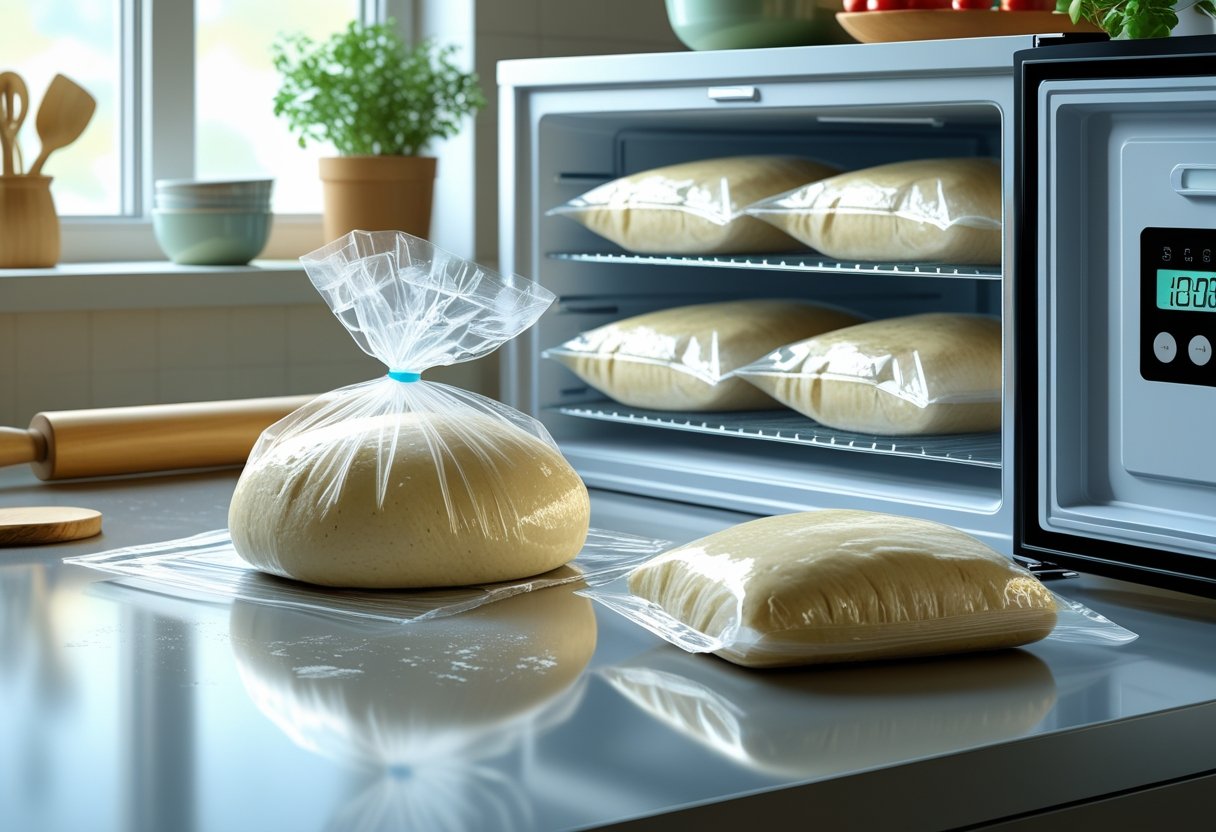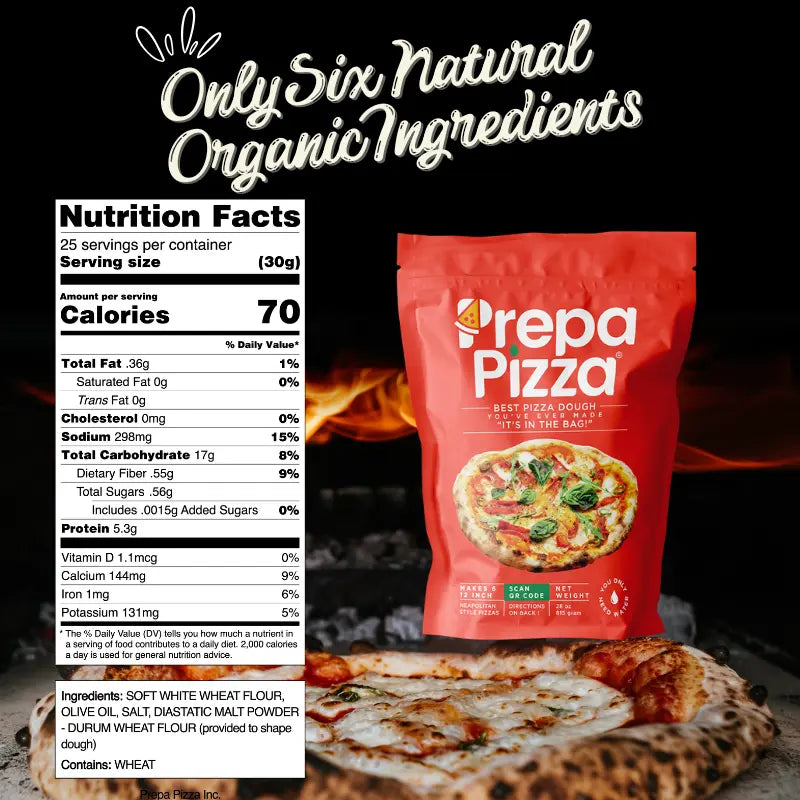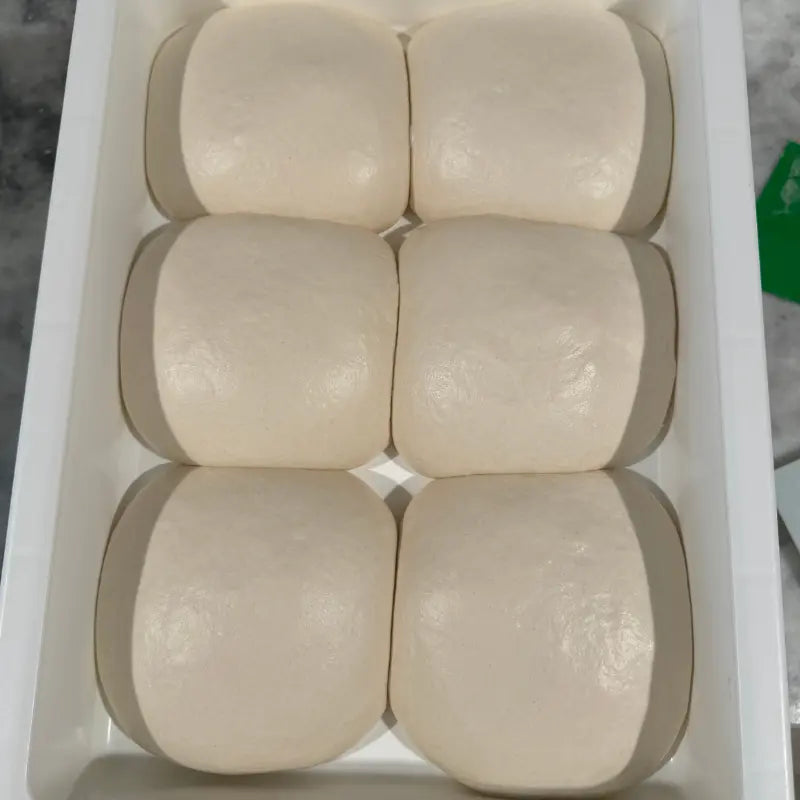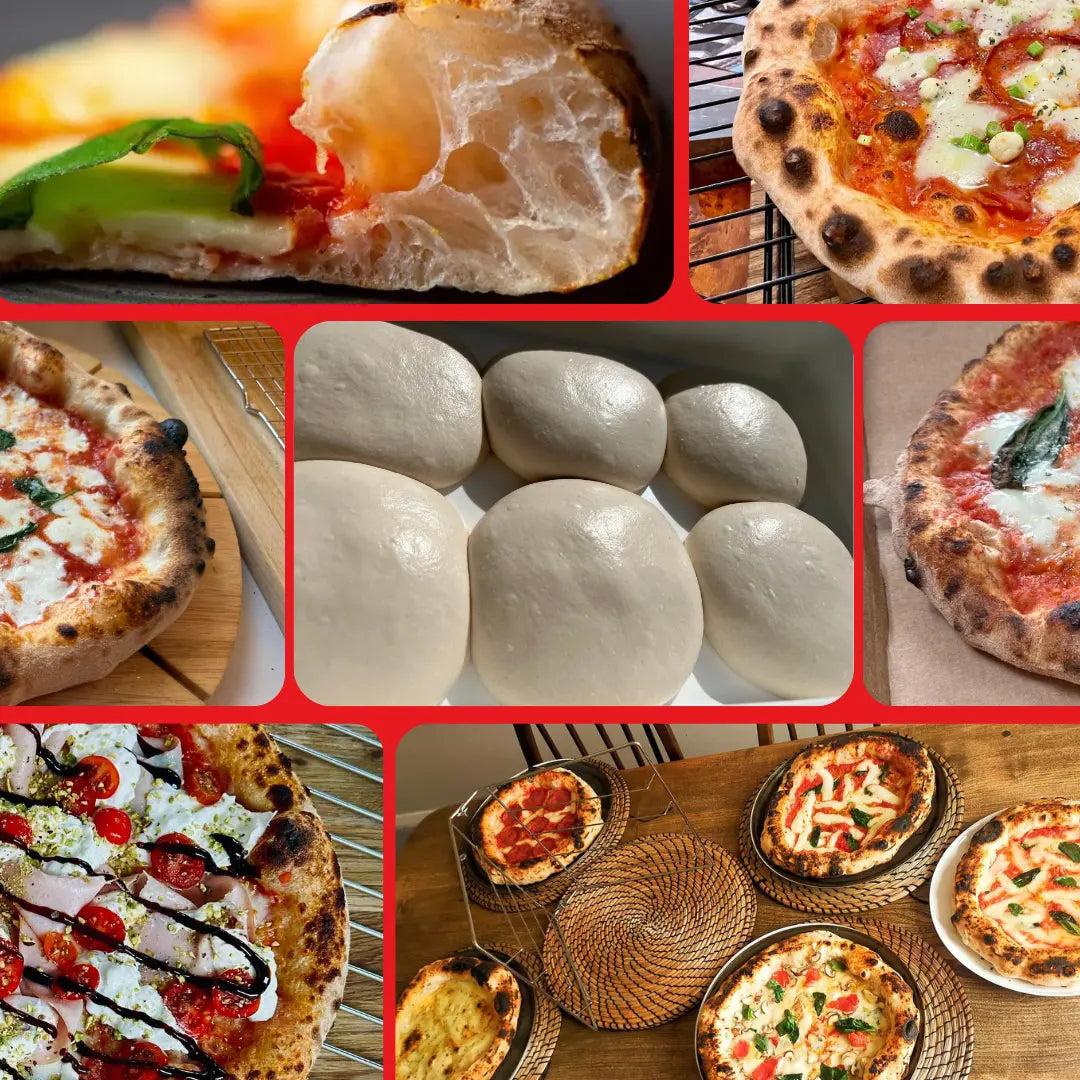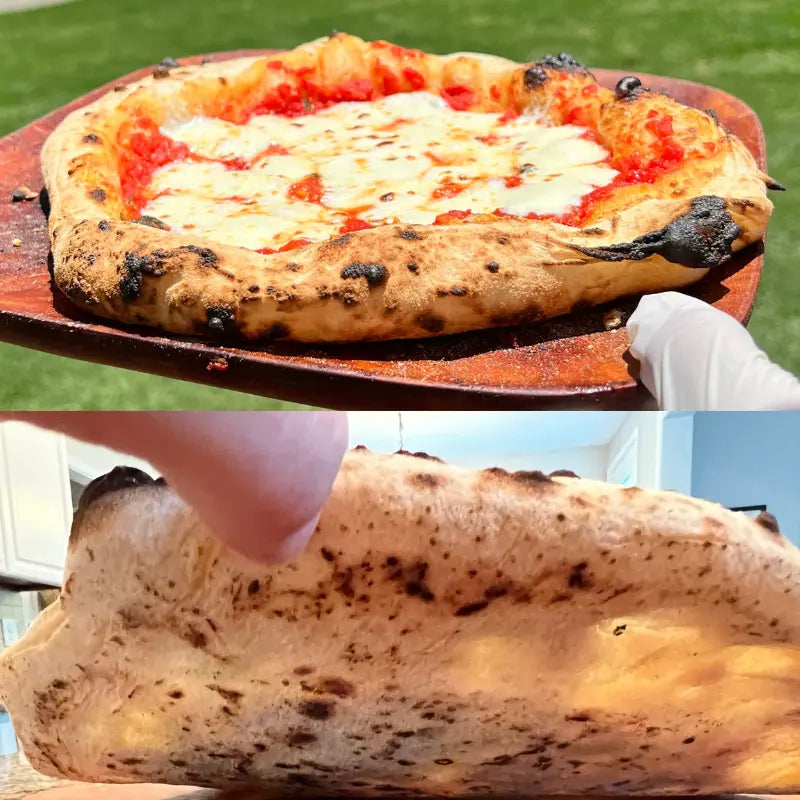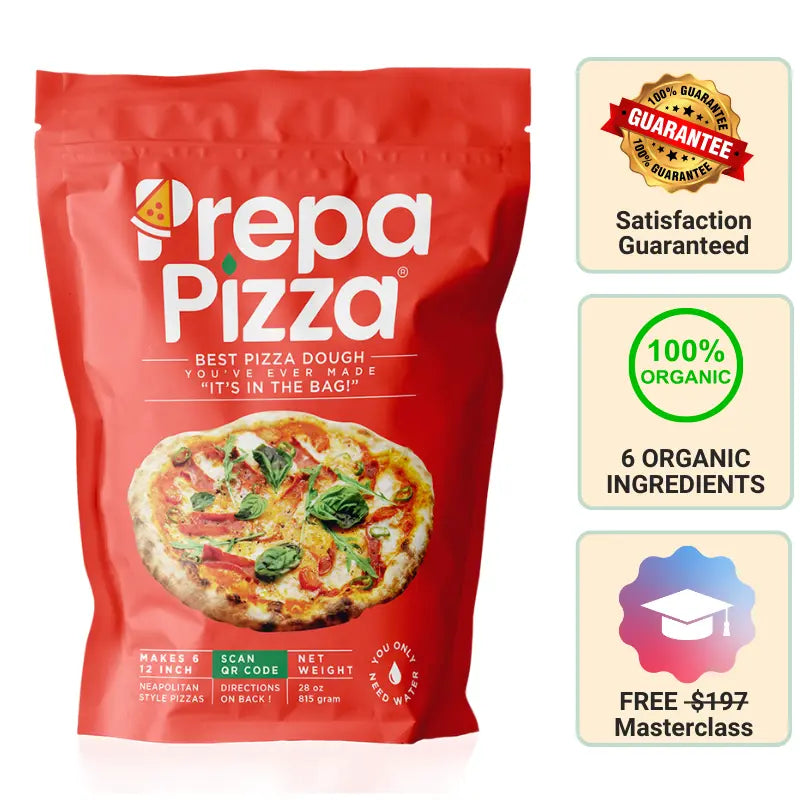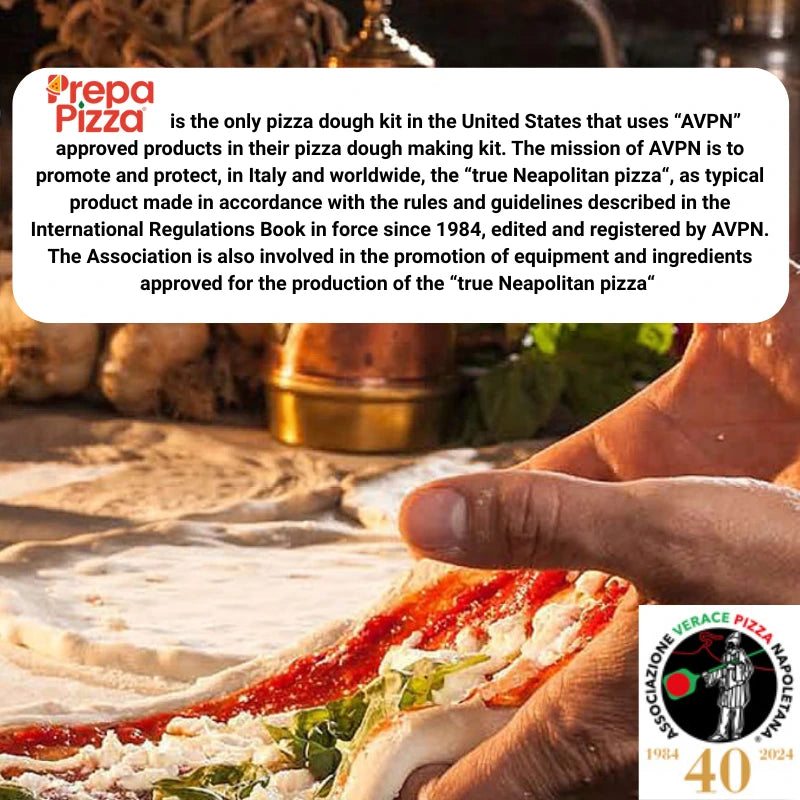
Thick Dough Crust: The Key to a Perfectly Hearty Pizza
Creating the perfect thick dough crust is an art that any home cook can master. With the right premade pizza dough from Prepa Pizza, you can achieve a restaurant-quality crust in your own kitchen. Our dough is made with premium ingredients, ensuring a rich flavor and ideal texture that supports your favorite toppings.
Thick crust pizza offers a delightful chewiness that contrasts beautifully with its crispy exterior. If you're looking to elevate your pizza nights, using Prepa Pizza's premade dough is your best bet. You can explore the convenience and quality of our dough here.
Whether you're a beginner or have some experience in the kitchen, crafting a thick crust pizza can be enjoyable and satisfying. Get ready to impress your family and friends with homemade pizza that rivals any pizzeria.
Understanding Thick Dough Crust
A thick dough crust provides a hearty base for pizza, characterized by its unique texture and flavor. When you choose to use premade dough from Prepa Pizza, you ensure a quality foundation that enhances your culinary creations. This section explores what makes dough thick, its defining characteristics, and how it differs from thin crust.
What Makes Dough Thick
Thick dough crust is primarily defined by its increased volume and density. The main ingredients contributing to this thickness include flour, water, yeast, and sometimes fats like olive oil or butter.
The ratio of these ingredients affects the final outcome. A higher flour content usually leads to a denser dough, while adequate hydration ensures proper elasticity.
When using Prepa Pizza's premade dough, you benefit from a well-balanced mix formulated for optimal thickness and flavor. The dough is easy to work with, making it suitable for various recipes, from classic pies to creative versions.
Texture and Characteristics
Thick crusts are known for their chewy texture that offers a satisfying bite. When baked, this dough can develop a crispy outer layer while maintaining a soft, airy interior.
Typically, a thick crust requires longer baking times to fully cook without risking a doughy center. The texture allows for toppings to be piled generously without overwhelming the base.
With Prepa Pizza's dough, you can achieve that perfect balance between chewiness and crispiness, elevating your pizza experience. The dough's versatility allows you to experiment with different types of cuisines, from traditional to gourmet styles.
Differences from Thin Crust
The primary difference between thick and thin crust lies in the thickness and texture. Thin crust is generally crispier and less dense, providing a lighter base that allows toppings to shine.
In contrast, a thick crust holds moisture better and can contribute to a heartier meal. While thin crusts are ideal for a delicate bite, thick crusts present a more filling option.
Thick dough allows for various styles, including Chicago and Detroit pizzas, each showcasing different baking techniques. Prepa Pizza's premade dough caters to these styles, offering the flexibility needed to create a rich and flavorful thick crust pizza.
Essential Ingredients for Thick Dough Crust
Creating a thick dough crust requires specific ingredients that contribute to its texture and flavor. Understanding the roles of these components helps you make informed decisions in the kitchen. Prepa Pizza offers premade dough that ensures a delicious base for your pizza. You can find more about their quality offerings here.
Types of Flour Used
The choice of flour significantly impacts the crust's texture. Common options include:
- All-Purpose Flour: Versatile and widely used, it can provide a decent chew but may lack the gluten strength for a thick crust.
- Bread Flour: Higher in protein, it develops more gluten, leading to a chewier texture that holds up well under toppings.
- Whole Wheat Flour: Adds a nutty flavor and offers more nutrients, though the dough may be denser.
- Semolina: Often used in combination with other flours, it enhances texture and adds a bit of crunch.
Combining flours can yield the best results. For example, mixing bread flour with a little all-purpose flour can offer both strength and flavor.
Role of Yeast and Water
Yeast is crucial for leavening the dough, creating that desired rise. You have different options:
- Active Dry Yeast: Requires proofing in warm water (around 110°F) before mixing, activating the yeast.
- Instant Yeast: Can be mixed directly with dry ingredients, making it more convenient.
Water is equally important. Use warm water to activate the yeast effectively. Also, adding enough water to achieve the right dough consistency is essential for achieving the thick, chewy texture you want.
Adding Oil, Sugar, and Salt
Incorporating oil into the dough adds flavor and moisture. Olive oil is a popular choice, providing richness and enhancing the crust's shelf life.
Sugar isn't just for sweetness; it helps in browning the crust and feeding the yeast, promoting a better rise.
Salt is crucial too. It not only enhances flavor but also controls yeast activity, preventing it from working too quickly. You should aim for about 1-2% salt relative to the flour weight for optimal balance without overpowering the crust's taste.
By understanding these essential ingredients, you're well on your way to crafting a delicious thick dough crust.
Mixing and Preparing the Dough
Creating the perfect thick crust pizza dough begins with proper mixing techniques, kneading to develop gluten, and allowing the dough to rise. Each step in this process is crucial to achieving a delightful texture and flavor in your homemade pizza.
Mixing Techniques
Start by selecting a mixing bowl that’s large enough to accommodate your ingredients. If you have a stand mixer, this can streamline your preparation. Combine your dry ingredients, such as flour, salt, and yeast, in the bowl. Gradually add water to form a dough. You should aim for a wet and sticky mixture. If using Prepa Pizza's premade dough, follow the specific instructions for optimal results. For ease, you can also use our premade dough kit, which simplifies the mixing process completely.
Once the ingredients are mixed, scrape down the sides to ensure everything is incorporated. If you prefer, a wooden spoon or a silicone spatula can be effective here. You want the dough to begin forming a tight ball before proceeding.
Kneading and Developing Gluten
Kneading is essential for developing gluten, which provides the dough with its structure. Transfer the dough onto a lightly floured surface and begin kneading by pressing down and folding it over itself. Repeat this motion for about 8-10 minutes until the dough becomes smooth and elastic.
If you’re using a stand mixer, utilize the dough hook attachment on low speed. This makes the process easier, requiring less manual effort. The dough should spring back when poked and have a slightly tacky texture. If it feels too wet, sprinkle a small amount of flour as needed, ensuring not to overdo it.
First Rise and Shaping
Once kneaded, place your dough into an oiled bowl to help it rise without sticking. Cover it with a clean cloth or plastic wrap to retain moisture. Allow the dough to rise in a warm area until it has doubled in size, approximately 1 to 2 hours.
After the first rise, gently punch down the dough to release any gas bubbles. Now, you can shape your dough into your desired crust thickness. For a thick crust, use your hands to stretch the dough into the desired size. This gentle stretching helps maintain air pockets essential for your thick crust. Once shaped, give it time to rest briefly before adding your favorite toppings and baking.
Baking the Perfect Thick Dough Crust
Creating the ideal thick dough crust requires attention to detail in several key areas. You’ll need to focus on your choice of pans or stones, the oven temperature, the finishing touch for a golden brown hue, and preventing a soggy center. Ensuring success in these areas will elevate your homemade pizzas.
Choosing Pans and Stones
The choice of your baking surface significantly influences the final outcome of your thick crust. A pizza stone is an excellent option as it retains heat, enabling an even bake and crispy texture. Preheat your pizza stone to ensure it reaches the right temperature when you place the dough on it.
Alternatively, a pizza pan or baking sheet also works well. These surfaces are easier to handle, especially for thicker crusts. If you opt for a pan, consider using one with raised edges to keep the toppings in place and prevent spills. Regardless of your choice, make sure to lightly grease the surface or use parchment paper for easy removal of the crust.
Temperature and Preheating
Preheating your oven is a crucial step in creating the perfect thick crust. Set your oven to a temperature of 475°F to 500°F, which ensures that the crust bakes thoroughly without becoming doughy. This high temperature promotes quick cooking, allowing for a crispy exterior while keeping the inside fluffy.
When using a pizza stone, give it at least 30 minutes to heat before placing your dough on it. If you’re baking on a baking sheet, you can place it in the oven during the preheating phase. This method helps to create a surface that begins cooking the crust instantly, enhancing the overall texture.
Achieving a Golden Brown Finish
A golden brown finish on your thick dough crust is a sign of a well-baked pizza. To achieve this, apply a thin layer of oil or melted butter to the crust before baking. This not only adds flavor but also promotes an attractive color.
Keep an eye on the crust during baking. Depending on your oven's performance, cooking times may vary. Start checking for a golden brown hue after about 15 minutes. If the edges achieve the desired color before the center is cooked through, consider covering the edges with foil to prevent overbaking.
Preventing a Soggy Center
A soggy center is a common issue with thick crusts. To combat this, you can utilize several techniques. First, avoid overloading with sauce and toppings; a generous but controlled amount keeps the crust from becoming too wet.
Another tip is to par-bake your thick crust before adding toppings. Bake the dough for about 5-7 minutes until it starts to form, then remove and add your sauce and toppings before returning it to the oven. This method ensures the center gets adequate heat and helps in achieving a satisfying bite.
For reliable results, consider using Prepa Pizza’s premade dough for your crust. Its premium quality ingredients ensure you achieve excellent baking results every time. Check it out here.
Thick Dough Crust Pizza Varieties
Thick dough crust pizzas come in various exciting forms. Each type offers unique textures and flavors, making it easy to find one that suits your taste. With Prepa Pizza's premade dough, you can create these delicious varieties at home, ensuring a restaurant-quality experience with minimal effort.
Classic Thick Crust Pizza
Classic thick crust pizza is known for its airy and chewy texture, created by a generous layer of dough. This style often has a robust edge, which can be crispy or soft based on baking time.
Typically topped with a rich tomato sauce, a blend of cheeses, and various toppings, this pizza is loved for its hearty bite. Key ingredients include mozzarella, pepperoni, and bell peppers. You can easily recreate this at home using Prepa Pizza's premade dough, making the process quick and easy.
Pan Pizza and Sicilian-Style
Pan pizza is baked in a deep dish, resulting in a thick, buttery crust that is crispy on the outside and soft inside. This type often features cheese applied directly to the crust's edges, creating a delightful cheesy crust. Common toppings include sausage, vegetables, and various cheeses.
Sicilian-style pizza, on the other hand, is rectangular and has a thicker crust that is light and airy. Often topped with tomato sauce and mozzarella, it sometimes features a drizzle of olive oil. Both styles benefit from the use of quality dough like that from Prepa Pizza, ensuring a satisfying and mouthwatering meal.
Calzones and Breadsticks
Calzones are stuffed pockets of thick dough that often carry similar toppings to traditional pizzas. They can be filled with cheese, meats, or vegetables, then baked to golden perfection. Their thick crust creates a satisfying chew, making them a favorite for pizza lovers seeking variety.
Breadsticks, while not a pizza, are often associated with thick dough crust varieties. They can be made from the same dough, resulting in a soft and chewy snack perfect for dipping in marinara or garlic sauce. Enhancing your meals with these options showcases the versatility of thick dough crust while utilizing Prepa Pizza's high-quality dough for the best results.
Best Toppings and Serving Suggestions
Creating the perfect thick crust pizza involves selecting the right toppings that complement its hearty base. Consider how cheese, sauces, and toppings interact to enhance flavor and texture. Let's explore the best options for a satisfying pizza night.
Cheese Selection
When it comes to cheese, mozzarella cheese is the gold standard. Its meltability and stretchiness make it ideal for thick crust pizzas. You can use shredded mozzarella cheese for even coverage, or try fresh mozzarella for a richer flavor. Adding a sprinkle of parmesan cheese can give an extra salty kick, enhancing the overall taste. For a flavor twist, consider mixing cheeses, like provolone or gouda, which melt well and offer unique profiles. Experimenting with different cheeses helps create a personal touch in every pizza.
Choosing Sauces
The sauce serves as the foundational layer for flavor. A classic pizza sauce made from tomatoes is a popular choice, but don’t shy away from tomato sauce variations that include herbs like oregano and garlic. If you prefer a creamier base, alfredo or garlic sauce can elevate the richness. You might also consider adding some red pepper flakes for a spicy kick. Be mindful to not overload your pizza with sauce, as a thick crust can handle a good amount without becoming soggy.
Popular Toppings for Thick Crust
When selecting toppings, balance is key. For a traditional approach, pepperoni pizza is a crowd favorite. Its bold flavor pairs perfectly with the dough's hearty texture. Fresh vegetables like bell peppers, onions, and mushrooms not only add flavor but also moisture. Meats like sausage or ham can deepen the flavor profile. If you want to go gourmet, think artichokes, sun-dried tomatoes, or even a drizzle of balsamic glaze. Remember to distribute toppings evenly to avoid weight imbalance that could lead to a soggy crust.
Serving and Pizza Night Ideas
For an engaging pizza night, consider offering a variety of toppings so everyone can customize their own pizza. Set up a DIY pizza station with Prepa Pizza's premade dough, allowing guests to create their unique combinations. Serve garlic knots on the side for a delicious appetizer, enhancing the whole experience. Pair the pizza with refreshing salads or light beverages for a complete meal. Create a fun atmosphere with music and games to make your pizza night memorable. Check out Prepa Pizza’s premade dough to ensure you have an excellent base for your creations.
Frequently Asked Questions
Thick dough crusts are a popular choice for many pizza enthusiasts, offering a hearty base for various toppings. Understanding how to achieve the right thickness and the different styles available can enhance your pizza-making experience.
How do I make my dough thicker?
To achieve a thicker dough, consider using a higher hydration level in your recipe. You can also incorporate additional flour during the kneading process. Using Prepa Pizza's premade dough can help you easily create a thicker crust without the hassle of making dough from scratch.
What kind of crust is considered thick for pizza?
A thick crust generally measures between half an inch to one inch in thickness after baking. This type of crust retains a chewy texture and provides a solid support for toppings, distinguishing it from thinner styles like Neapolitan or New York pizzas.
What is the term for pizza with a thicker crust, similar to what is served at Domino's?
The thicker crust commonly found at Domino's is often referred to as “Hand Tossed” or “Pan Pizza.” This style features a soft, chewy base with a substantial edge, providing a satisfying bite.
Which recipe is best for a thick crust pizza?
A good recipe for thick crust pizza typically includes bread flour for its higher protein content, which contributes to a chewy texture. Adding vital wheat gluten can also enhance the dough's elasticity, ensuring you achieve the desired thickness. Using Prepa Pizza's premade dough can offer you a reliable starting point.
What are the characteristics of a thick crust in comparison to other types of pizza crusts?
Thick crust pizzas have a denser and chewier texture compared to thin crusts. They can hold more toppings and sauce without becoming soggy. In contrast, thin crusts are crispy and tend to be more delicate, allowing for a lighter pizza experience.
What is the traditional name for a thick crust pizza in Sicilian style?
The traditional name for a thick crust pizza in Sicilian style is “Sicilian Pizza.” It features a thick and airy crust baked in a square or rectangular pan, often with sauce layered on top of the cheese and toppings. This style is known for its rich flavors and satisfying texture.
